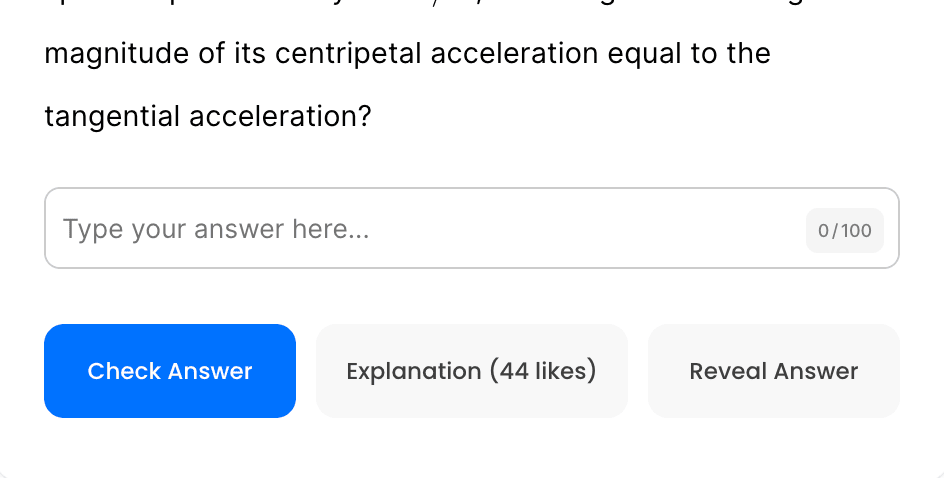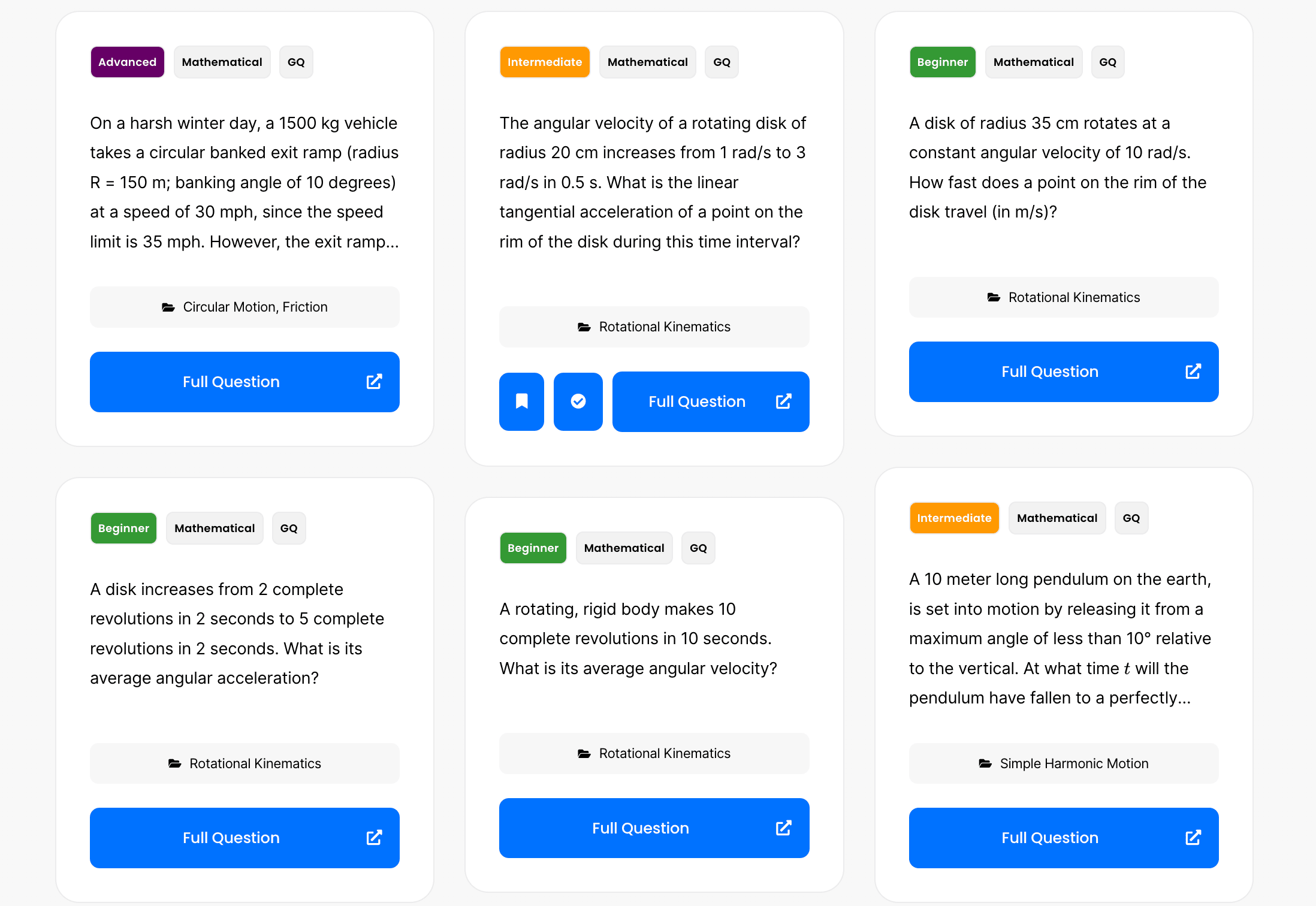An object is projected vertically upward from ground level. It rises to a maximum height [katex] H [/katex]. If air resistance is negligible, which of the following must be true for the object when it is at a height [katex] H/2 [/katex] ?
A 70 kg woman and her 35 kg son are standing at rest on an ice rink, as shown above. They push against each other for a time of 0.60 s, causing them to glide apart. The speed of the woman immediately after they separate is 0.55 m/s.
Assume that during the push, friction is negligible compared with the forces the people exert on each other.
A centrifuge accelerates uniformly from rest to 15,000 rpm in 240 s. Through how many revolutions did it turn in this time?
A girl, standing still, tosses a ball vertically upwards. One second later, she tosses up another ball at the same velocity. The balls collide \( 0.5 \) \( \text{s} \) after the second ball is tossed. With what velocity were they tossed? The acceleration due to gravity is \( 9.8 \) \( \text{m/s}^2 \).
Jill does twice as much work as Jack does and in half the time. Jill’s power output is
Vector \( V_1 \) is \( 6.0 \) units long and points along the negative \( y \) axis. Vector \( V_2 \) is \( 4.5 \) units long and points at \( +45^\circ \) to the positive \( x \) axis.
Why is the stopping distance of a truck much shorter than for a train going the same speed? Hint: try deriving a formula or stopping distance.
You pull a box with a constant force across a frictionless table using an attached rope held horizontally. If you now pull the rope with the same force at an angle to the horizontal (with the box remaining flat on the table). Does the acceleration of the box increase, decrease, or remain the same if the rope is pulled at an angle? Explain.
A man weighing \( 700 \) \( \text{N} \) and a woman weighing \( 400 \) \( \text{N} \) have the same momentum. What is the ratio of the man’s kinetic energy \( K_m \) to that of the woman \( K_w \)?
Two objects are dropped from rest from the same height. Object \( A \) falls through a distance \( d_A \) during a time \( t \), and object \( B \) falls through a distance \( d_B \) during a time \( 2t \). If air resistance is negligible, what is the relationship between \( d_A \) and \( d_B \)?
| Wagon | Wheel Structure | Moment of Inertia | Wheel Mass | Wheel Radius |
|---|---|---|---|---|
| Wagon \(A\) | Solid disk | \[\frac{1}{2} M R^2\] | \[ 0.5 \, \text{kg} \] | \[ 0.1 \, \text{m} \] |
| Wagon \(B\) | Solid disk | \[\frac{1}{2} M R^2\] | \[ 0.2 \, \text{kg} \] | \[ 0.1 \, \text{m} \] |
| Wagon \(C\) | Hollow hoop | \[M R^2\] | \[ 0.1 \, \text{kg} \] | \[ 0.1 \, \text{m} \] |
Three wagons have identical total mass (including their wheels) and each has four wheels. However, the wheels on each wagon have different designs with varying mass distributions and radii as shown in a reference chart. When accelerating each wagon from a standstill to \( 10 \) \( \text{m/s} \), which wagon requires the most energy input?
A space probe far from the Earth is travelling at \( 14.8 \) \( \text{km s}^{-1} \). It has mass \( 1\,312 \) \( \text{kg} \). The probe fires its rockets to give a constant thrust of \( 156 \) \( \text{kN} \) for \( 220. \) \( \text{s} \). It accelerates in the same direction as its initial velocity. In this time it burns \( 150. \) \( \text{kg} \) of fuel.
Calculate the final speed of the space probe in \( \text{km s}^{-1} \).
By continuing you (1) agree to our Terms of Use and Terms of Sale and (2) consent to sharing your IP and browser information used by this site’s security protocols as outlined in our Privacy Policy.
Quick Start Guide
AP physics 1, AP C, honors and advanced physics students.
Quickly filter questions by units and more.


Here’s guide to using 5 UBQ filters.
GQ = general question, MCQ = multiple choice, FRQ = free response.


Click the check or bookmark button.
Now you’ll be able to see completed or bookmarked questions at a glance!
Answer keys, personalized for you.

Phy will be responsible for grading your FRQs and GQs.
No more copy and pasting. Just solve and snap.
Questions for Mastery

By continuing you agree to nerd-notes.com Terms of Service, Privacy Policy, and our usage of user data.